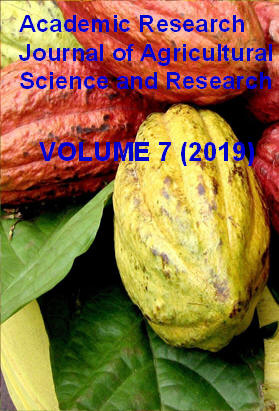|
ISSN: 2360-7874 |
Academic Research Journal of
Agricultural Science and Research |
|||||||||||||||||||
|
Vol. 7(2), pp. 87-99, March 2019 Full Length Research Review on Mechanisms of Drought Tolerance in Sorghum (Sorghum bicolor (L.) Moench) Basis and Breeding Methods
Kidanemaryam Wagaw
Jimma University College of Agriculture and Veterinary Medicine, P.O.Box 307 Jimma, Ethiopia. Corresponding author’s E-mail: kidanwagaw@yahoo.co.uk
Accepted 5 March 2019
Sorghum is grownup in semi-dry to arid regions of the world and helps as the primary food for about half a billion public in sub-Saharan Africa and Asia. Drought is one of the most restrictive abiotic factors causal meaningfully to yield loss in arid and semi-arid surroundings and continues to be a challenge for plant breeders, regardless of many decades of research. This problem can alleviate by developing crops that are well adapted to moisture constraint areas. Sorghum (Sorghum bicolor (L.) Moench) is an important drought tolerant crop in such areas and is a good crop model for evaluating mechanisms of moisture stress tolerance. Direct selection for yield under drought has been the major breeding policy and was successful in some crops but not for all. Drought varies the structure and function of plants. sympathetic of the influence, mechanisms and traits underlying drought tolerance is vital to grow drought-tolerant cultivars. Proof of identity and evaluation of important physiological traits would aid and fortify molecular breeding and genetic engineering stand in targeting and delivering traits that improve drought tolerance capability of crops. There is an overlay amongst different osmotic stresses and the selection of appropriate drought valuation methods. The benefits of genetic engineering have been realized in crop improvement for quality traits, and several promising genes have emerged in the past decade as candidates for drought tolerance. Combining the physiological traits that would sustain yield under drought, and integrating elite quantitative trait loci (QTL) and genes underlying these traits into high-yielding cultivars, would be a successful approach.
Key words: Drought tolerance, physiology, breeding, genetics, mechanisms, Sorghum bicolor, stay green, resistance.
How to cite this article (APA Style): Kidanemaryam W (2019). Review on Mechanisms of Drought Tolerance in Sorghum (Sorghum bicolor (L.) Moench) Basis and Breeding Methods. Acad. Res. J. Agri. Sci. Res. 7(2): 87-99
|
|||||||||||||||||||
